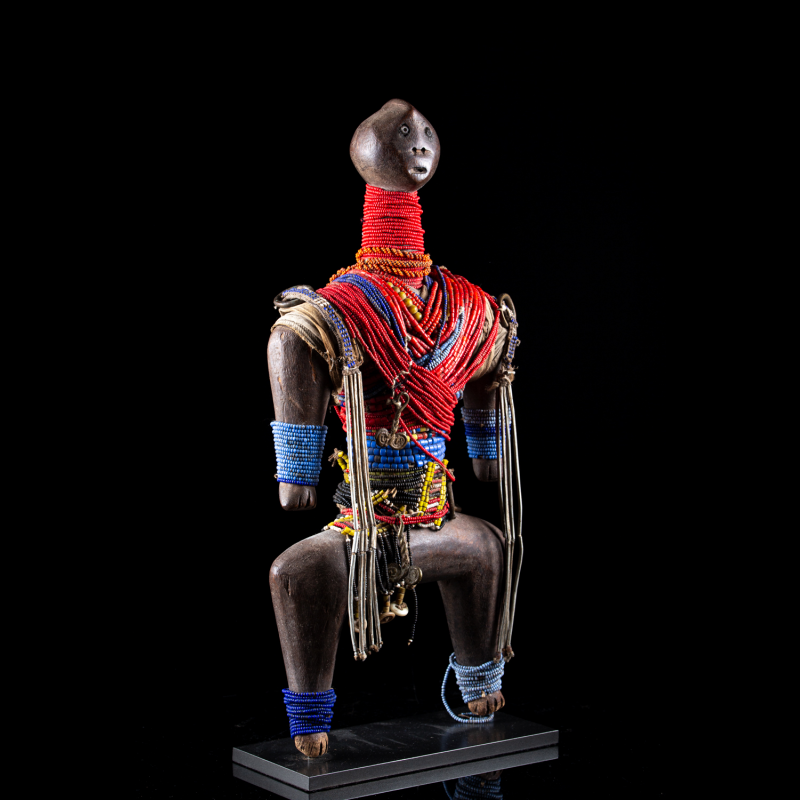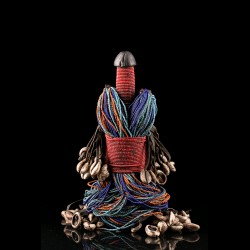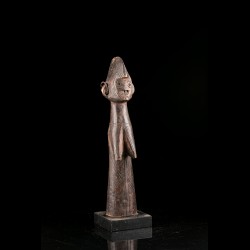












Traditional Namji (or Namchi) statues or dolls are easily identifiable among the rich African statuary. Their extremely simplified shape, straight legs spread in the same plane as the arms, minimalist spherical head and excessively colored bead necklaces are among the elements of identification.
These African dolls from Cameroon were sometimes considered as objects sculpted for purely commercial purposes, to meet the demand of colonists, Germans in particular, for souvenir objects to bring back to Europe.
We know that this is not the case, these figures were offered to women by their fiancé and worn by them in order to ensure their fertility as well as offspring.
The doll represents the future unborn child.
It has also been reported that women without children or milk touch or press these figures so that their desire for motherhood comes true.
The figure that we offer you here comes from the collection of Pierre Dartevelle (Brussels merchant 1940-2022).
Data sheet
You might also like

Traditional Namji (or Namchi) statues or dolls are easily identifiable among the rich African statuary. Their extremely simplified shape, straight legs spread in the same plane as the arms, minimalist spherical head and excessively colored bead necklaces are among the elements of identification.
These African dolls from Cameroon were sometimes considered as objects sculpted for purely commercial purposes, to meet the demand of colonists, Germans in particular, for souvenir objects to bring back to Europe.
We know that this is not the case, these figures were offered to women by their fiancé and worn by them in order to ensure their fertility as well as offspring.
The doll represents the future unborn child.
It has also been reported that women without children or milk touch or press these figures so that their desire for motherhood comes true.
The figure that we offer you here comes from the collection of Pierre Dartevelle (Brussels merchant 1940-2022).

